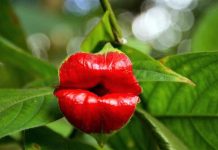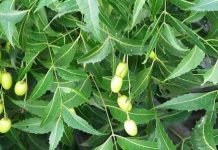Scientific name: Typhonium trilobatum (L.) Schott
Family: Araceae
Synonym: Arum trilobatum L.
Bengali/Vernacular name: Kharkon, Ghetkachu, Ghetkul, Ghikul.
Tribal name: Harbaj (Chakma), Sangfa sarakang (Marma), Harbait (Tanchangya), Kalman (Garo), Alenda (Tripura).
English name: Bengal arum, Lobed leaf typhonium.
Description of the plant: A small tuberous terrestrial herb. Leaves petiolate, petiole up to 25-40 cm long, sheathing at the basal part, leaf blade usually deeply trilobed. Peduncle slender, up to 5 cm long; spathe 15-18 cm long, tube elliptic, greenish outside, and purplish inside. Spadix erect, around 15 cm long. Female inflorescence short-cylindric, about 7 mm long; male inflorescence 1.25-1.5 cm long, rose-pink, situated above the female.

Plant parts used: Leaf, root.
Ethnomedicinal uses: A paste is made with the leaves of the plant is applied externally on the mouth of boils twice a day for three days to treat it.
A paste is made with the leaves of the plant is applied on the burned skin once a day until the wound is healed.
A fresh juice is extracted from the roots of the plant is taken three times a day (5 ml amount each time) for 3 days to treat fever.
A fresh juice is extracted from the leaves of the plant is taken three times a day (two tea spoons amount each time) with water for three days to treat colic.
Cottonseed-sized pills are made from the leaves of the plant is taken twice a day (one pill each time) until the dry cough is cured.
The roots of the plant are used to treat piles, stomach complaints, vomiting, asthma, excessive expectoration; sore throat, headache, gastric ulcer, abscesses, and snake bite.
Distribution: The species commonly occurs throughout the country.
Is this plant misidentified? If yes, please tell us….
















… [Trackback]
[…] Find More here on that Topic: natureinfo.com.bd/typhonium-trilobatum/ […]